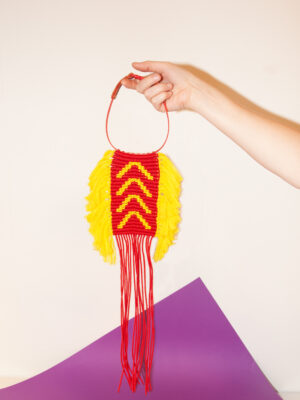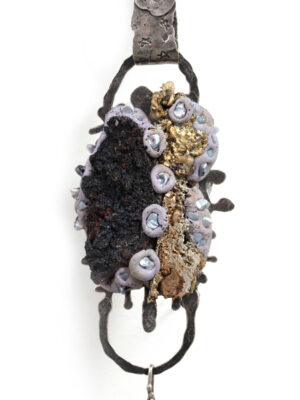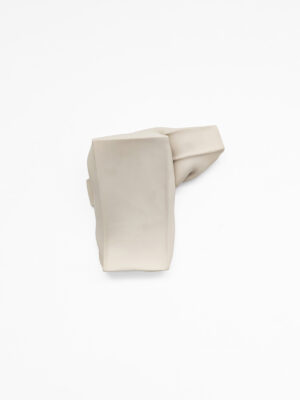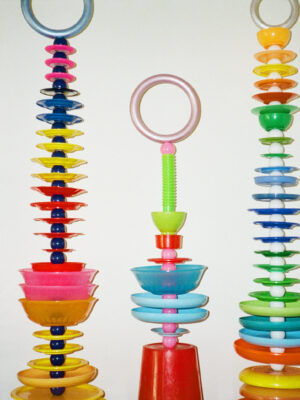
Current Obsession: Could you talk a little bit about your background?
Helena Johansson Lindell: I’m a visual artist and jeweler living and working in Bromma, Stockholm. I studied jewellery and silversmithing to start with in a technical, vocational school. Later I did my bachelor’s degree in Norway and exchange studies in Finland as well and eventually, I studied at Konstfack for one year. Since 2012 I’ve been working on my own in my studio.
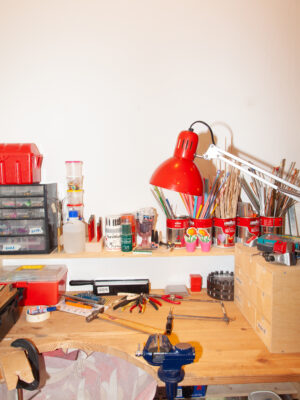
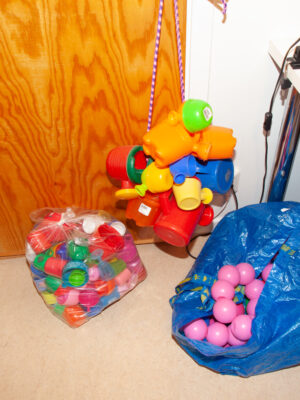
CO: Having this traditional silversmiths training, how did you end up with textile and plastic?
HJL: I was happily stuck with metal for some time. I love the material, I love the relationship that evolved with this material and the endless possibilities really. It wasn’t until I left school that I started working with plastic. Plastic toys to be specific. I started collecting them because I was drawn to them. I was attracted to the colours. and the playfulness associated. But at that time I didn’t know if I would be able to make it into jewellery. So at that point, it was just for me. Eventually, I started cutting them up, joining them together with other toys and finding out what I liked about them. What shapes do I prefer? You know, slow progression.
And I can’t talk about the material without mentioning the colour. Because obviously, the colours are important to me. They are nutrients that I need in my work. And so, the cotton cords are yet another material that holds colour all the way through the fibers.
The materials that I’ve been working with so far, like metal, wood or plastic, they are all solid. They are all sturdy materials whilst in this case, the cotton cord or textile materials have a fluidity to them. Choosing to work with a textile material has been my way of challenging myself, to not become stagnant or comfortable. To learn a new type of logic, or adjust my logic and expression to a new material.
… I can’t talk about the material without mentioning the colour. Because obviously, the colours are important to me. They are nutrients that I need in my work. And so, the cotton cords are yet another material that holds colour all the way through the fibers.

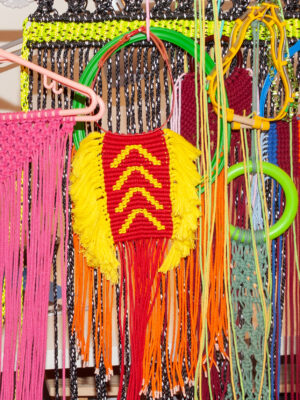
CO: Are you addressing sustainability issues through the usage of plastic?
HJL: My first answer is no because I don’t start with the concepts. I start with the material. However, working with plastic in today’s society, yes, thoughts about sustainability will arise; what materials are okay to use, and how do we use them? But also, how do we value them? One of our problems is that we are so intimately involved with plastic and we need it. The way that we’ve built our society, we are completely dependent on it and yet we blame it for so many things. So, what if we instead started to treat it with some respect, for the service it has given us? Maybe then we wouldn’t throw it around us and we would deal with it a bit differently.
CO: Your latest collection ‘Between colourful cliché and pandemic macramé’ is photographed on your friends in the skatepark. How did you come up with this idea?
HJL: I had just started tying the macramé when corona happened, so the work is done during the pandemic when everything was being questioned. I was also questioning myself. Why do I do this at all? Why am I an artist? Why do I make the jewels? I needed to find methods that I could trust and one of them was roller skating. And so, this was a method I used during the toughest part of the pandemic when we were all in chaos and not knowing what was going to happen. My roller skating progression happened simultaneously with the macramé work. It just felt natural to bring the pieces along to the skatepark. Art and life coming together in new ways. Usually, when I’m in the studio I ask my friends and colleagues and people visiting to wear my work, so I can photograph them. But in this scenario, I didn’t work in my studio and I didn’t have visitors. So instead I brought them with me to the park where I was skating to let my friends wear them.

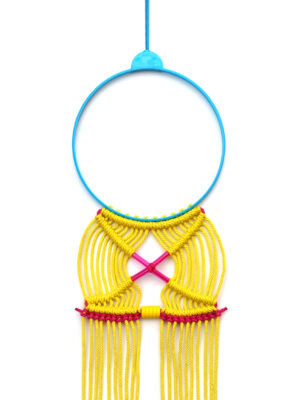
CO: How is your routine of working from your home studio like?
I’ve had my studio in many different places. This is a brand new space for me, so I haven’t really worked in here yet, I’m just getting organised and moving stuff around. But it’s an enjoyable process as well. This was a big step for me to move the studio to my home. It was something that I was both looking forward to and being a bit frightened of. Because when I have worked from my home before, I found it difficult to know when to start working, when to stop working. Basically, to find a good rhythm with my everyday life.
Thanks to the corona outbreak, I was forced to work from home. It was just something that needed to happen and needed to work out. I’ve often been in a shared space with a lot of people and I love the way that you influence each other, or how you get inspired by the workflow and energy. Now I need to create that by myself.
This article was produced in connection with Stockholm Craft Week 1-4 October 2020
